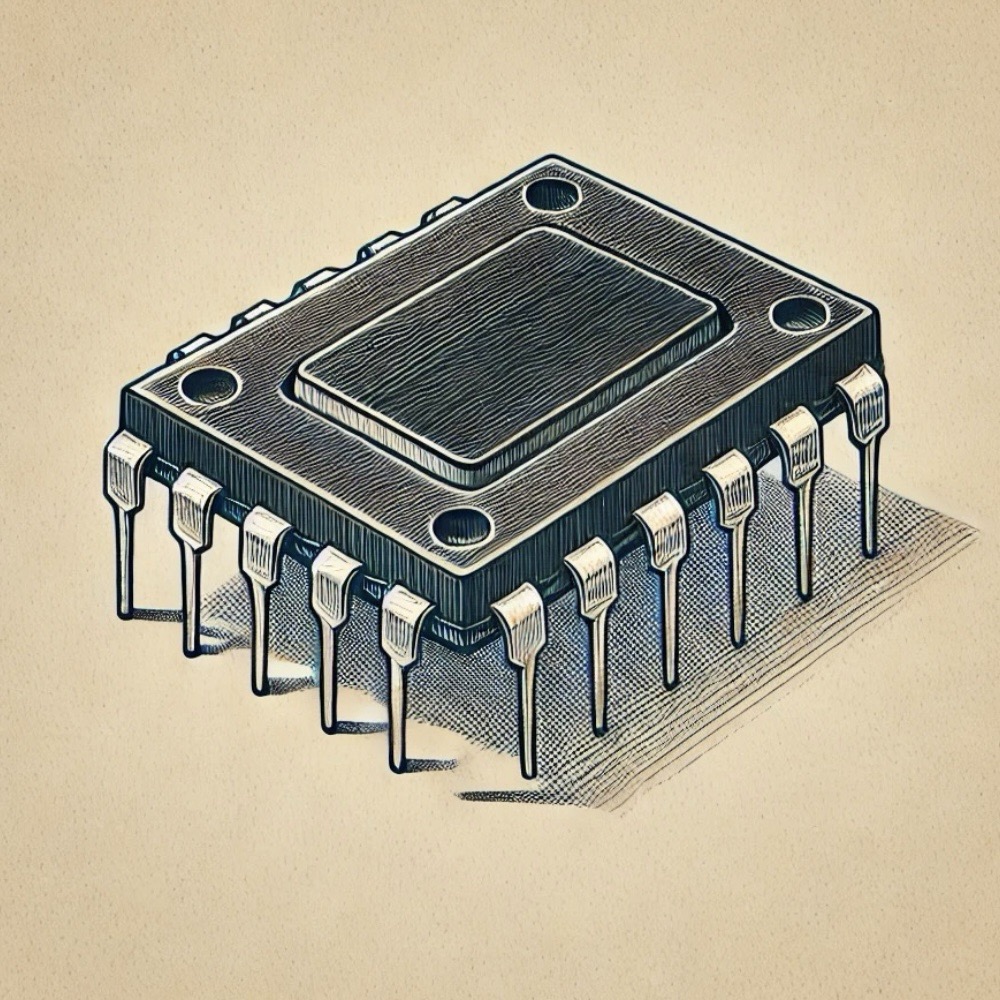Overview
The PIC16F877A is a highly popular 8-bit microcontroller from Microchip Technology, widely used in embedded systems for its versatility, ease of use, and rich feature set. This microcontroller strikes a balance between performance and simplicity, making it a preferred choice for professionals and hobbyists alike.
With up to 20 MHz processing speed, multiple I/O options, and integrated peripherals such as ADCs and communication modules, the PIC16F877A is well-suited for applications ranging from home automation to motor control.
Specifications
Key technical specifications of the PIC16F877A include:
- CPU Architecture: 8-bit RISC
- Operating Voltage: 2.0V to 5.5V
- Clock Speed: Up to 20 MHz
- Flash Memory: 14 KB
- RAM: 368 bytes
- EEPROM: 256 bytes
- GPIO: 33 I/O pins
- ADC: 8 channels with 10-bit resolution
- Timers: Three timers (Timer0, Timer1, Timer2)
- Communication Interfaces: USART, SPI, I2C
- Special Features: Watchdog Timer, Sleep Mode, PWM
- Package Options: Available in DIP, QFN, and other formats
Key Features
The PIC16F877A offers a robust set of features designed for a wide range of embedded applications:
- Powerful RISC Core: Efficient 8-bit architecture with 35 single-word instructions.
- Rich Peripherals: Includes ADCs, PWM modules, timers, and communication interfaces (USART, SPI, I2C).
- Memory Flexibility: Offers Flash, RAM, and EEPROM for program storage and runtime data handling.
- Low Power Modes: Power-saving features like Sleep Mode and a configurable Watchdog Timer.
- Clock Options: Supports internal and external oscillators for flexible timing configurations.
- High Pin Count: 33 general-purpose I/O pins for extensive peripheral connections.
- Wide Voltage Range: Operates in a range of 2.0V to 5.5V, suitable for various power conditions.
These features make the PIC16F877A versatile, reliable, and cost-effective for diverse embedded system designs.
Applications
The PIC16F877A is a go-to microcontroller for various applications due to its balanced performance and feature set. Common use cases include:
- Embedded Control Systems: Home automation, industrial controllers, and process automation.
- Motor Control: PWM-based control for DC motors and stepper motors.
- Data Acquisition: Real-time data collection using its ADC channels.
- Lighting Control: Intelligent LED lighting systems with dimming capabilities.
- Educational Projects: Ideal for teaching microcontroller programming and prototyping.
The PIC16F877A’s combination of affordability and versatility ensures its utility in both simple and complex projects.
Programming
Programming the PIC16F877A microcontroller is straightforward, supported by Microchip’s comprehensive development tools and resources. Here’s how to get started:
Development Tools
- MPLAB X IDE: A robust environment for writing, testing, and debugging code.
- MPLAB XC8 Compiler: Optimized for programming PIC microcontrollers in C language.
- MPLAB Code Configurator (MCC): Simplifies peripheral initialization and configuration with a graphical interface.
Programming Tools
- PICkit 3: An affordable and reliable programmer/debugger for ICSP.
- PICkit 5: A modern alternative with faster programming speeds.
Programming Workflow
Steps to program the PIC16F877A:
- Install MPLAB X IDE and the XC8 Compiler.
- Connect the microcontroller to your circuit or development board using a compatible ICSP programmer.
- Create a new project in MPLAB X, configure the device, and write your code.
- Compile the code and program the microcontroller using a PICkit or similar tool.
- Debug and test the application using the available MPLAB debugging features.
Microchip’s ecosystem ensures seamless development and deployment for the PIC16F877A, whether you are a beginner or an expert.
